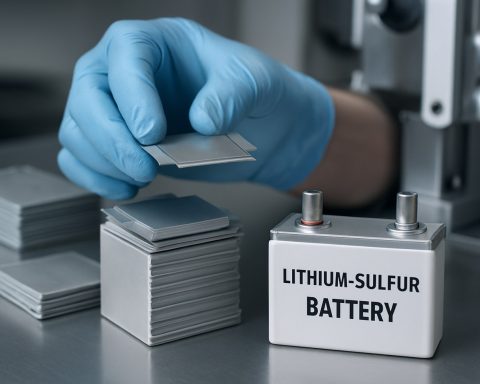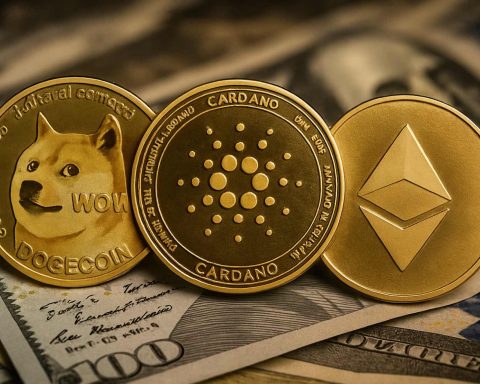- D-Wave Quantum claims quantum computational supremacy with its advanced annealing quantum computer.
- The achievement, published in Science, demonstrates the computer’s ability to simulate complex magnetic materials faster than top supercomputers.
- CEO Alan Baratz touts this as the first practical demonstration of quantum supremacy.
- The breakthrough involved international scientists using D-Wave’s Advantage2 prototype and Oak Ridge National Laboratory’s Frontier supercomputer.
- Potential applications extend to healthcare and manufacturing, indicating transformative industry impacts.
- Although fully error-corrected quantum computers are yet to arrive, existing quantum annealers solve significant computational challenges.
- This marks a paradigm shift, heralding a future where quantum solutions inspire and drive innovation across global industries.
A revolution ripples through the tech world as D-Wave Quantum unveils a groundbreaking achievement, heralding a new era in computing. The avant-garde company claimed quantum computational supremacy with its cutting-edge annealing quantum computer, setting a benchmark for real-world quantum technology applications. The announcement ignited a flurry of excitement among investors, propelling D-Wave shares impressively upward alongside a surge in valuations of peers like Quantum Computing, IonQ, Arqit Quantum, and Rigetti Computing.
The buzz stems from a recent highlight in the renowned journal, Science. The paper, “Beyond-classical computation in quantum simulation,” illustrates D-Wave’s quantum computer tackling complex magnetic materials simulations with remarkable speed, outpacing the world’s fastest supercomputers.
CEO Alan Baratz emphasized that this marks history as the first tangible demonstration of quantum supremacy—a game-changer in a field where prior claims fell short of demonstrating practical value. This pivotal research unfolded under the guidance of an international cohort of scientists, leveraging D-Wave’s Advantage2 prototype quantum computer in conjunction with the Oak Ridge National Laboratory’s Frontier supercomputer.
The crux of their study delves into the enigmatic lattice structures, intricately arranging atoms or ions, fundamental to materials ranging from the sparkle of diamonds to robust industrial metals. These insights herald transformative possibilities in diverse sectors, from healthcare innovations to manufacturing advancements.
While the enchanting world of fully error-corrected quantum computers remains on the distant horizon, the present yields practical triumphs. As MIT’s Seth Lloyd points out, D-Wave’s quantum annealers are already adept at solving some of today’s most formidable computational challenges.
This development signals not just a technological leap but a paradigm shift, ushering in a future where quantum solutions redefine boundaries, inspire awe, and promise a cascade of innovation across industries worldwide. As we stand at the frontier of quantum discovery, the message is clear: the quantum leap has begun.
The Quantum Leap: How D-Wave’s Breakthrough is Reshaping Computing
Exploring the Impact of D-Wave’s Quantum Computational Supremacy
The recent announcement by D-Wave Quantum regarding their breakthrough in achieving quantum computational supremacy has created significant ripples across the technology sector. Here’s a deeper dive into this fascinating development, exploring additional facts and insights that extend beyond the initial report.
Key Facts and Insights:
1. Quantum Annealing vs. Gate-Based Quantum Computing:
– D-Wave employs quantum annealing, a different approach from the gate-based quantum computers used by companies like Google and IBM. Quantum annealing is particularly effective for optimization problems—tasks that involve finding the best solution among many possible options.
2. Industry Applications:
– This breakthrough in simulating complex magnetic materials paves the way for advancements in optimizing manufacturing processes, drug discovery, and logistics. These applications resonate across healthcare—where protein folding and genetic sequencing could benefit—and transportation—streamlining supply chain and route optimization.
3. Market Impacts and Forecasts:
– The quantum computing market is set to grow exponentially. According to a report by the Allied Market Research, the global quantum computing market size is expected to reach $8.6 billion by 2027, growing at a CAGR of 30.2% from 2020 to 2027. Quantum supremacy achievements like D-Wave’s are catalysts for accelerating this growth.
4. Comparisons with Competitors:
– While D-Wave focuses on quantum annealing, competitors such as Google’s Sycamore, IBM’s Qiskit, and Rigetti’s gate-based processors aim at universal quantum computing. Each has unique strengths, depending on the problem domain and maturity of technology.
5. Challenges and Controversies:
– The claim of quantum supremacy has faced scrutiny due to previous instances where results couldn’t demonstrate scalable, real-world applications. D-Wave’s claim potentially overcomes these challenges by showcasing practical uses, though the broader applicability remains a topic for further exploration.
How-To Steps & Life Hacks: Implementing Quantum Solutions
1. Identify Suitable Problems:
Begin by pinpointing optimization problems in your industry that could benefit from speed and accuracy improvements through quantum computing.
2. Leverage Partnerships:
Collaborate with quantum computing companies and research institutions to access expertise and infrastructure, such as joining initiatives led by organizations like Quantum.gov.
3. Pilot Projects:
Initiate small-scale pilots to test quantum solutions, gradually scaling up based on outcomes. This cautious approach allows for risk management and iterative improvements.
4. Skill Development:
Invest in training for existing staff or hire talent knowledgeable in quantum computing to navigate this complex landscape effectively.
Industry Trends and Predictions:
– A surge in collaborations between tech companies and academia is expected as quantum technologies advance.
– The high demand for quantum computing talent will lead to an increase in educational programs and workshops focused on bridging the skills gap.
– Sustainability considerations might drive innovations within quantum computing to reduce energy consumption compared to classical approaches.
Pros & Cons Overview:
Pros:
– Offers exponential speedups for certain computational problems.
– Potential for significant advancements in multiple industries.
– Enhances understanding of quantum mechanics and simulation models.
Cons:
– Still in early development stages, many systems are error-prone.
– High implementation costs and need for extensive infrastructure.
– Limited to specific problem types that benefit from quantum annealing.
Conclusion and Quick Tips:
Quantum computing is still unfolding, but the journey toward a quantum revolution is underway. To capitalize on these advancements:
– Stay informed on the latest developments in quantum technology.
– Start integrating quantum thinking and solutions into your innovation strategies.
– Explore partnerships with organizations leading the quantum charge.
For further insights, visit the D-Wave Systems website to explore current projects and breakthroughs in quantum computing. The era of quantum innovation is afoot, and those who adapt early stand to gain the most.









